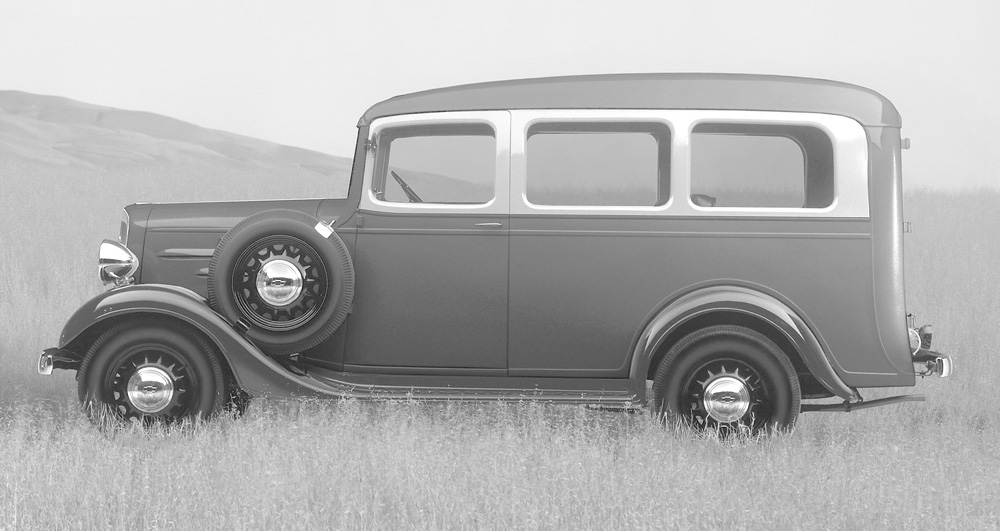
The Suburban wasn't just a significant model for Chevrolet, it was an important vehicle for the car industry as a whole. Arguably it was the first Sport Utility Vehicles (SUV), a tough, no-nonsense load carrier featuring a station wagon body on the chassis of a small truck. Actually christened the Suburban Carryall – for it could pretty much carry anything – its origins could be traced back to 1933 and a wooden eight-seater body on half ton truck frame, intended for National Guard and Civilian Conservation Corps units. When made available to the public, it gained an all-metal body fitted with either rear panel doors or a tailgate. "They were doing a crossover between a car and a truck," says Ed of the vehicle that gave birth to what is now the longest continuous name to be used on a car. "And it's got a cool interior, too, a real neat one. One might consider it the first crossover, and it's very much related to the Captiva."
Chevrolet introduced in 1936 the "Suburban", a vehicle that fundamentally changed the automobile market. With a focus on functionality, the credo of the new concept was "to carry all". At long last, the whole family was to find sufficient space in one car – and preferably the fishing equipment too. To build this automobile, Knudsen's engineers used a conventional truck chassis, but instead of installing a loading floor, as in the case of pick-ups, they had designed a generous passenger compartment in which up to 8 persons found sufficient seating space on three rows of seats. A sound 90 horse- power engine provided the necessary power, and the world's first station wagon was born. The "Suburban" had changed only very little by the time production was stopped in World War II. After the war , the "Suburban" underwent continuous improvements.
In 1955, the basic model was delivered with a 100 horse-power engine, and in 1956 a V8 became the standard. In 1957, the "Suburban" was available for the first time with 4-wheel drive, which made it a truly practical vehicle. It was no longer defined a station wagon, but a truck, and as such the prototype of the utility vehicles seen on our roads today.
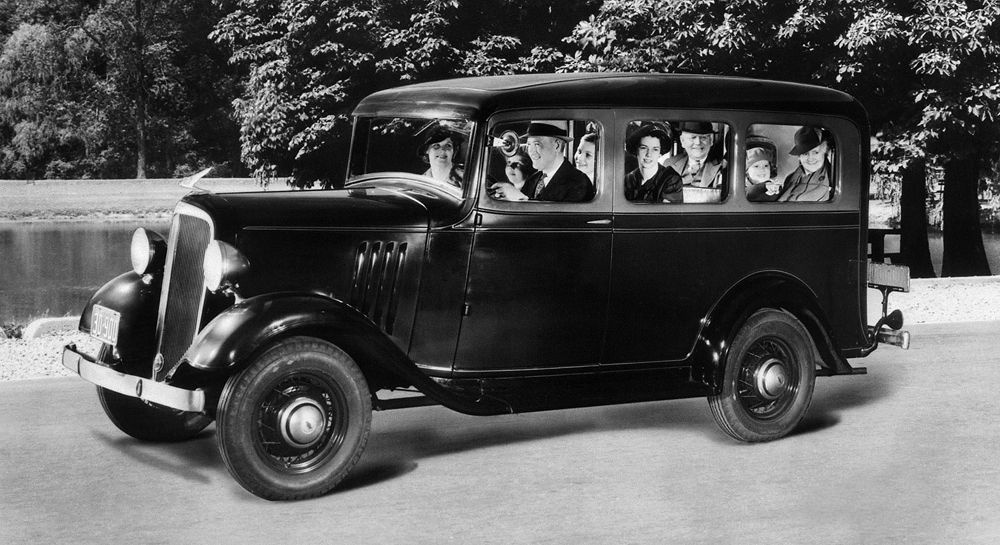
1935 Chevrolet Suburban Carryall
Suburban Carryall introduced with a signature two-door body style that would last through 1967. Power came from Chevrolet's stalwart "Stovebolt" inline-six that produced 60 horsepower (45 kW) for the half-ton chassis.
The idea for the Suburban was born out of a need for a heavier-duty, truck-based wagon. Through the early 1930s, most manufacturers offered car-based wagons for professional use. Open models with windows and rear seating were known as depot hacks, and were used to ferry passengers and their cargo around train stations and boat docks. Enclosed models, typically without rear seats, were known as sedan deliveries.
Bodywork for these early vehicles often consisted of wood sides and canvas tops; and while they were versatile, their car-based chassis and damage-prone bodies were compromises. Chevrolet began experimenting with an all-steel wagon body mounted on a commercial chassis in the mid-1930s, and the Suburban Carryall was launched in 1935.
The base price of the original, eight-passenger Suburban was about $675, or the equivalent of about $10,900 in 2010 dollars, a radio, heater, clock and even a rear bumper were extra-cost options. It might well have been called a sport utilitarian vehicle.
The original Suburban could seat eight, while easily removable seats provided a large, 75-inch-long by 77-inch-high (1,905 x 1,956 mm) cargo area. The 2010 Suburban seats up to nine, but offers up to 137.4 cubic feet (3,891 L) of cargo space when the second-row seats are folded and third-row seats are removed.
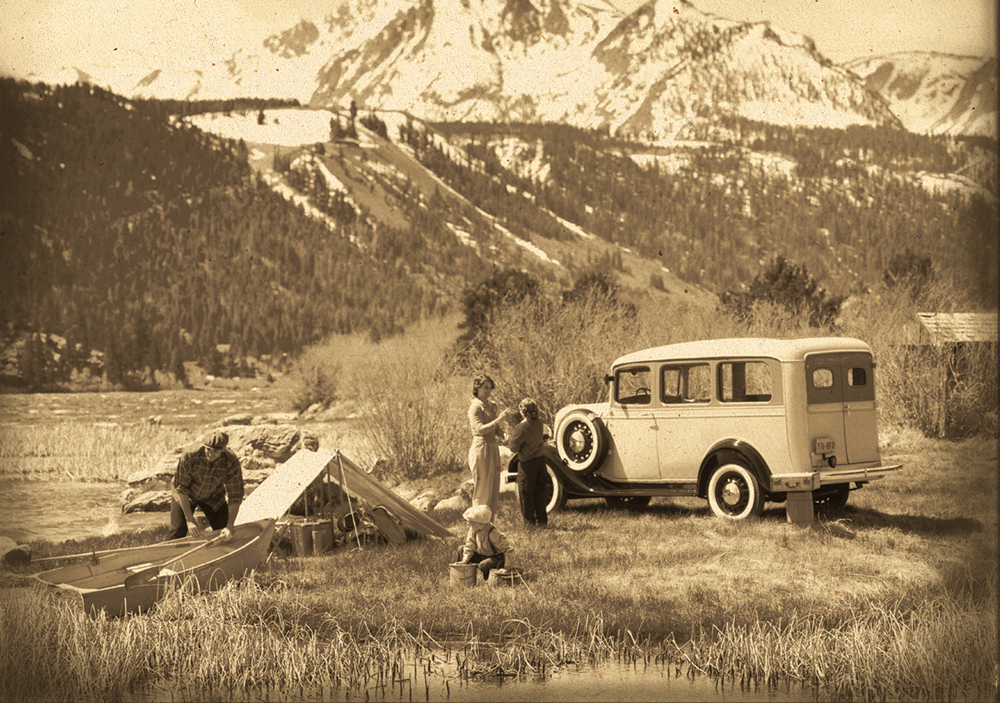
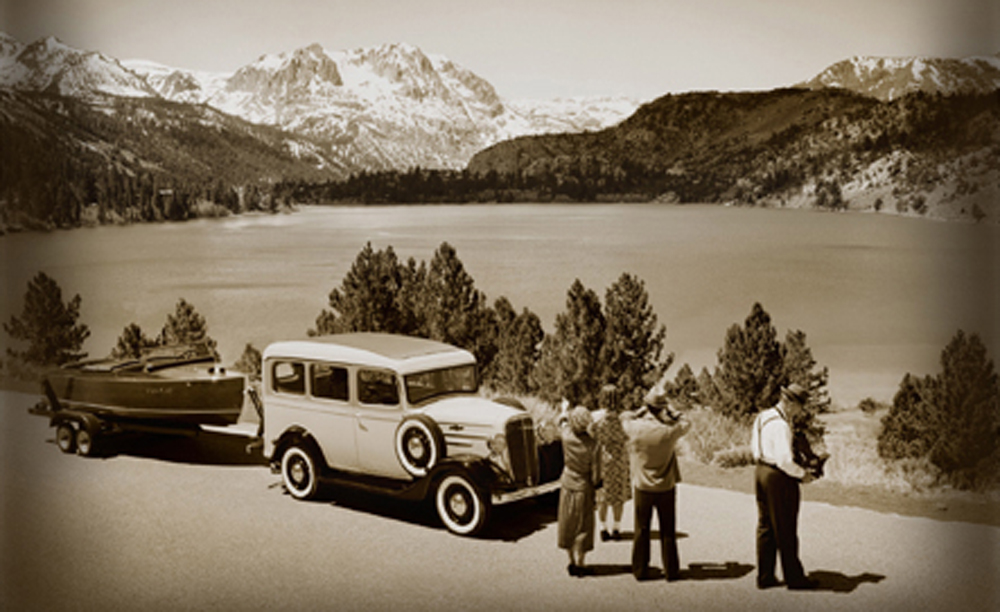
1935 Chevrolet Suburban Carryall
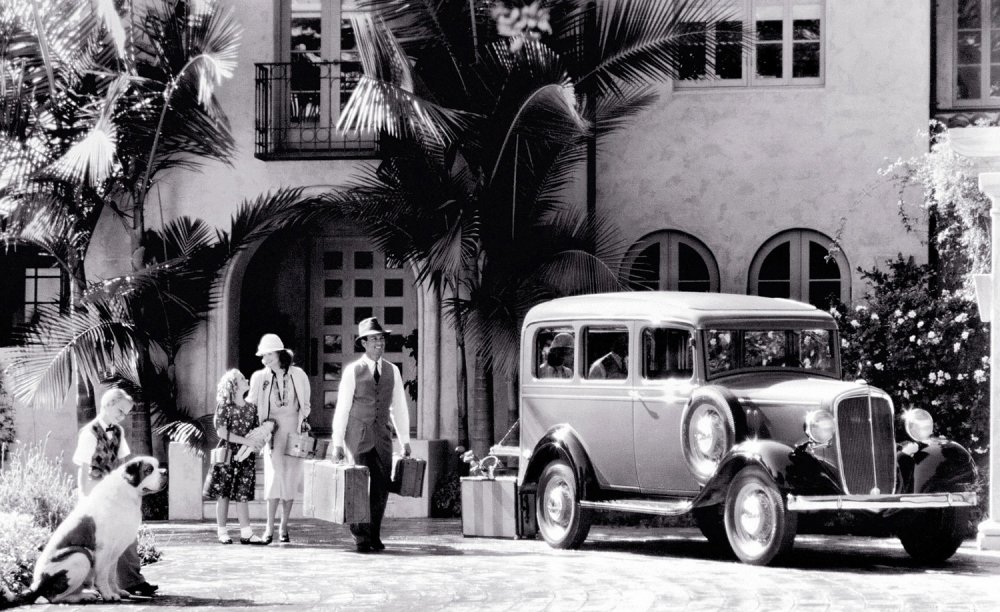
1936 Chevrolet
Suburban Carryall
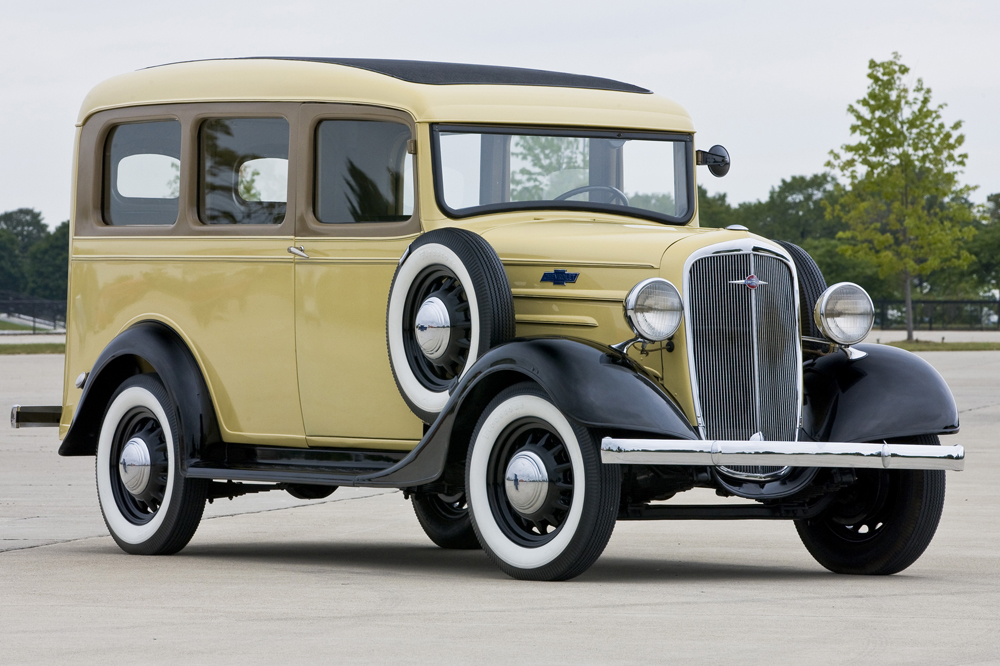
1936 Chevrolet Suburban Carryall
Hydraulic brakes introduced. The Chevrolet Suburban was launched during the Great Depression and in its second model year, it faced a market where unemployment was nearly 17 percent. President Franklin D. Roosevelt was reelected in a classic landslide. His New Deal programs were still winding their way through Congress, but two of them – Social Security and unemployment benefits – were enacted and already proving popular with voters. Roosevelt carried nearly 99 percent of the Electoral College votes and about 61 percent of the popular vote. There were glimmers of hope in the 1936 economy, which were reflected in the approximate 21-percent increase in Chevrolet truck sales versus the previous year. The Suburban accounted for a significant portion of those greater sales, as customers found its eight-passenger, wagon-style configuration ideal for ferrying passengers and work crews. The Suburban was a commercially oriented vehicle and wasn't marketed to "civilian" customers. The Suburban changed little from its inaugural model year in 1935. It was still based on Chevrolet's half-ton truck chassis, including a 112-inch wheelbase. Upgrades in the second year included the addition of hydraulic brakes, which enhanced safety, while changes to the engine brought about 30 percent more horsepower. But it was still a commercial vehicle, after all, and features including a radio, clock, heater and dual windshield wipers were available only as options. Power for the '36 Suburban came from Chevrolet's durable inline-six engine that was affectionately known as the Stovebolt engine – a nickname derived from the large, slotted-head fasteners in the engine that resembled those in popular wood-burning stoves. The Stovebolt displaced 207 cubic inches (3.4L), but the changes in 1936 brought a higher compression ratio and a new, better-performing carburetor. Horsepower increased from 60 in 1935 to 79.
-
1936 CHEVROLET SUBURBAN FACTS
Body style.............................................................Two-door with tailgate
Wheelbase............................................................112 inches
Engine...................................................................207-cubic-inch (3.4L) I-6
Horsepower..........................................................79 at 3,200 rpm
Torque (approx.)...................................................140 lb.-ft. at 1,000-2,000 rpm
Transmission..........................................................Three-speed manual
Curb weight (approx.)............................................3,300 pounds
THE BOTTOM LINE: 1936 INCOME AND PRICES (with
2010 inflation conversions)
Chevrolet Suburban (base
MSRP)..........................$685 ($10,743)
Median household
income.......................................$1,600
($25,095)
Median house
price.................................................$6,200
($97,242)
Cost of a gallon of regular
gasoline..........................$0.19 ($2.98)
Cost of a loaf of
bread............................................$0.08
($1.25)
Cost of a movie
ticket.............................................$0.24
($3.76)
Average Major League Baseball
salary....................$2,700 ($42,347)
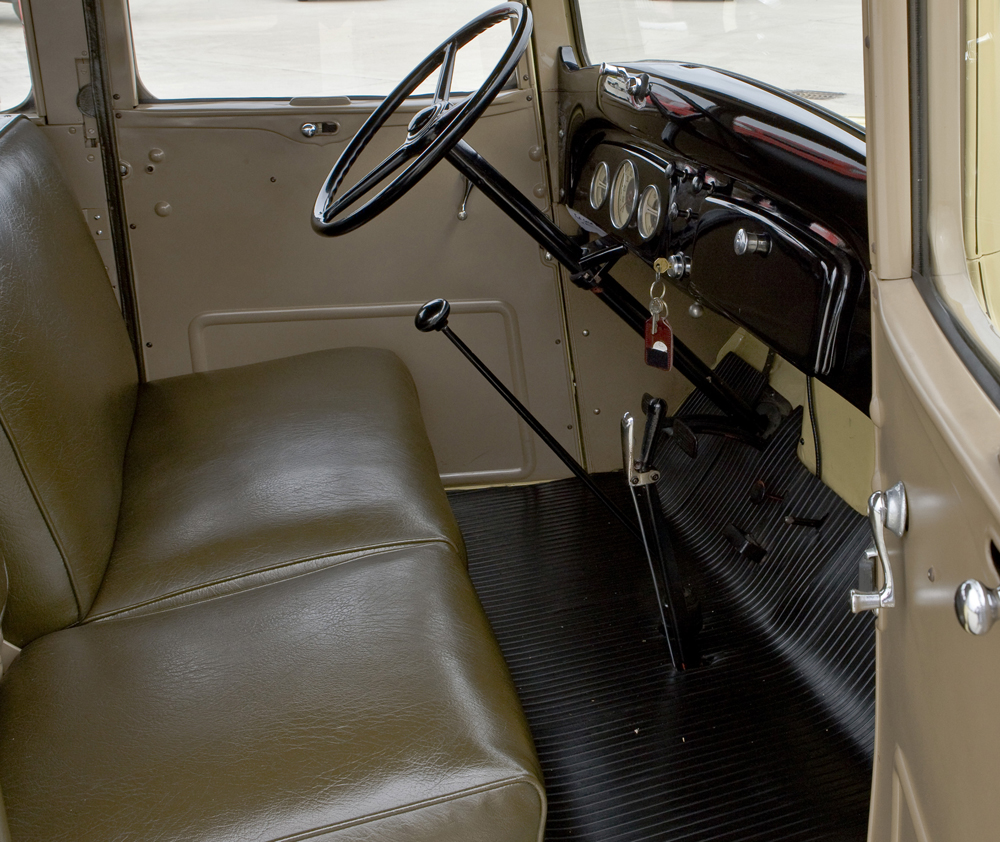

1936 Chevrolet Suburban Carryall
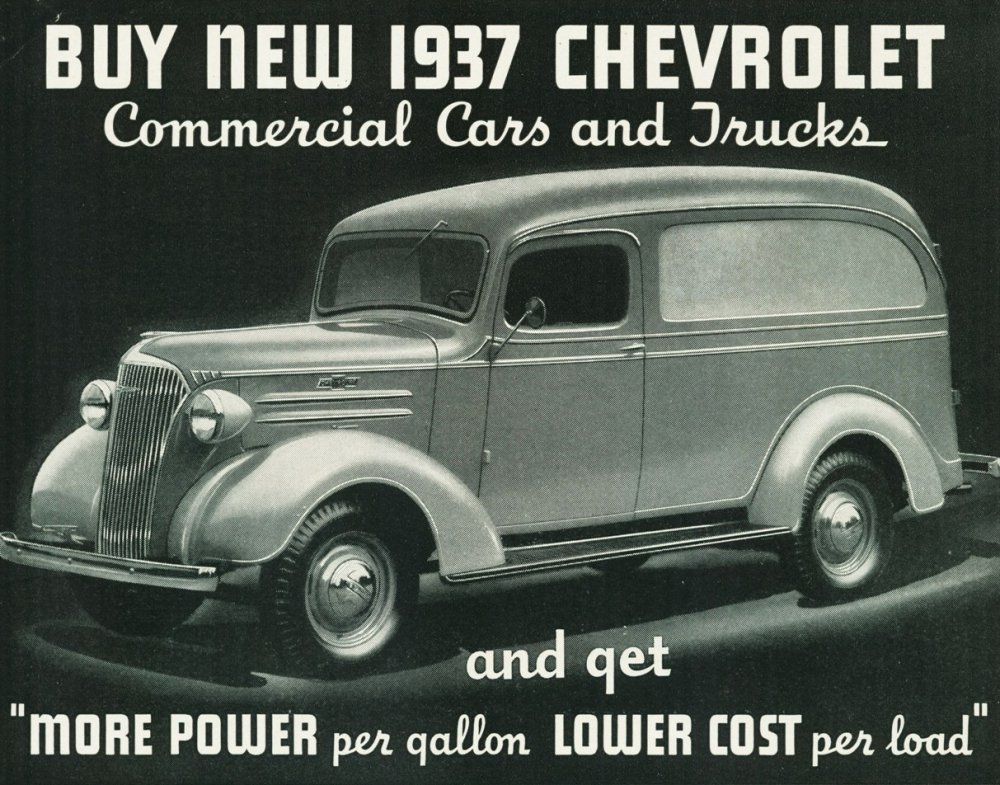
1937 Chevrolet Suburban Carryall
New for 1937, streamlined exterior styling carried Art Deco cues, and horsepower from the Stovebolt six
increased to 79hp. Safety glass is also introduced.
1938 Chevrolet Suburban Carryall
1939 Chevrolet Suburban Carryall
1940 Chevrolet Suburban Carryall
Sealed beam headlights debut, offering significantly improved visibility when driving at night.
This applies to all pages associated with Langdalefamily.com:
Warning--any person and/or institution and/or Agent and/or Agency of any governmental, public or private structure including but not limited to The United States Federal Government or any Government also using or monitoring/using this website or any of its associated websites, you DO NOT have my permission to utilize any of my information, pictures, messages or posts, past, present and future nor any of the content contained herein including, but not limited to my photos, and/ or the art posted on this website. You are hereby notified that you are strictly prohibited from disclosing, copying, distributing, disseminating, or taking any other action against me with regard to this profile and the contents herein. The foregoing prohibitions also apply to your employee(s), agent(s), student(s) or any personnel under your direction or control. The contents of this website are private and legally privileged and confidential information, and the violation of my personal privacy is punishable by law.
UCC 1-103 1-308 and the Rome Statute). ALL RIGHTS RESERVED WITHOUT PREJUDICE
